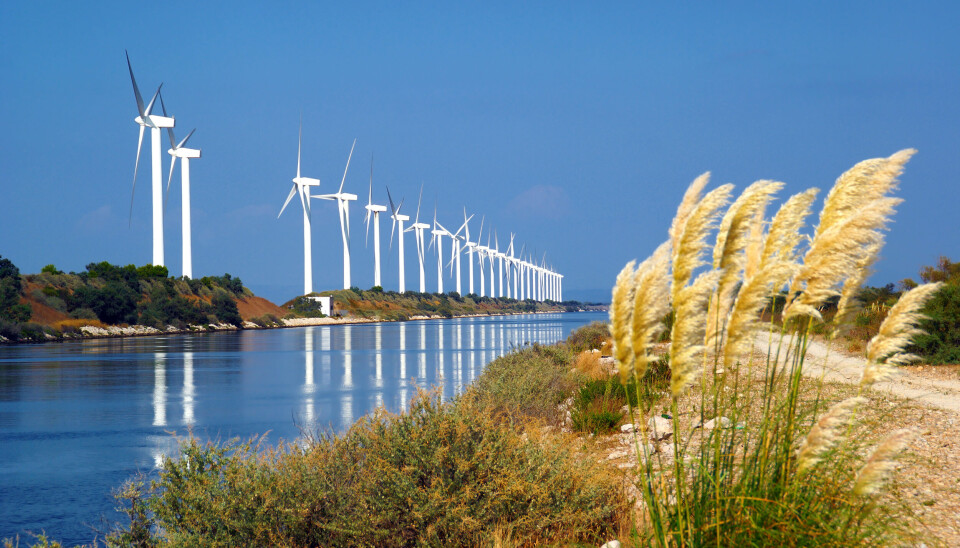Some 10% of solar and wind energy was wasted in 2025, according to figures from the electricity distributor RTE, as distribution networks struggle to cope with the rapid expansion of some renewable energy sources.
Even though more electricity was being produced than could be used or sold, the price of electricity did not fall.
The problem has been attributed to the intermittent nature of solar and wind power.
Solar power has a peak production period of between 11:00 and 15:00, while demand in France still peaks between 18:00 and 20:00 as people come home from work.
Nuclear reactor problems
France’s base electricity load comes from nuclear power, and nuclear reactors, once working, cannot be “turned up” or “turned down” quickly, unlike some fossil fuel power stations.
An example happened in mid-August, when a shoal of jellyfish were sucked into one of the main cooling water intakes at the giant Gravelines power plant near Calais, causing four reactors to be shut down as a safety measure.
It took four days for the reactors to be restarted after the jellyfish had been cleared from the filters in the intake.
RTE publishes up to the hour details of where France’s electricity is coming from.
On a hot day in mid-August at 11:30, it showed that nuclear power accounted for 67%, solar 16%, hydro-electric 9%, wind 3%, gas 2%, biofuel 2%, and diesel less than 1%.
By 14.45 the mix had changed to 58% for nuclear, 30% for solar, 6% for hydro-electric, 3% for wind, and 1% for both biofuel, gas and diesel.
'Negative prices'
In its half-year activity report, RTE said the French spot price for electricity, established by demand and supply, was very volatile.
There were 363 hours when the price was negative – it cost more to put electricity into the system than it could be sold for.
This compared to 235 hours of negative prices in the same period in 2024.
“If these negative prices get the media headlines, spot prices have actually risen overall so far in 2025, and remain at a relatively high level of €67 per MWh on average,” the RTE report states.
“This is due to the rise in the price of gas and colder temperatures, but in spite of the relatively high levels they remain among the cheapest in Europe.”
Solar energy production, officially encouraged by the French government, is continuing to rise.
Between January and May, 2.1GW of solar energy (and 0.2GW of wind energy) came on stream, bringing the total available solar energy to 26.4GW for solar energy and 24.6GW for wind turbines.
By contrast, the brand new Flamanville nuclear power plant at the end of the Cherbourg peninsula in Manche will produce 1.65GW if it ever functions per its designed output.
To date, it has not done so since it was first commissioned at the end of 2024.
Batteries to store renewables
One way of reducing the loss of surplus electricity during the day is to store solar power in batteries during peak production hours.
So far France has just 1GW of batteries installed on the grid, compared to a total of 61GW of battery storage across Europe.
RTE mentions batteries in its strategic plan until 2050, but only one experimental station at Perquié (Landes) has been commissioned, in 2024.
Its main battery strategy is to use them with solar power stations. Before this can be done, however, it says a regulatory tariff for the price of battery electricity will have to be set, which could take years.
Even so, it sees €500million being invested in batteries for the network in the next 15 years, mainly from private companies.
For domestic solar power, the installation of batteries, typically adding around €1,500 to the cost of a solar power system, is being promoted by some of the country’s main businesses, which have solar power divisions as a way to offset carbon taxes.
Among them is the state-owned electricity generator and supplier, EDF.
Its solar power unit, EDF Solutions Solaires, launched an offer in June which includes the installation of a domestic battery at the same time as panels.
The company says most clients with solar panels see a 30% reduction in electricity bills, which can rise to 60% for those who make the most use of electrical appliances during peak production hours.
With a battery, bills are typically cut by 80%, it says.
However, depending on the price of the installation it could still take between 10 and 15 years to pay for itself.




























